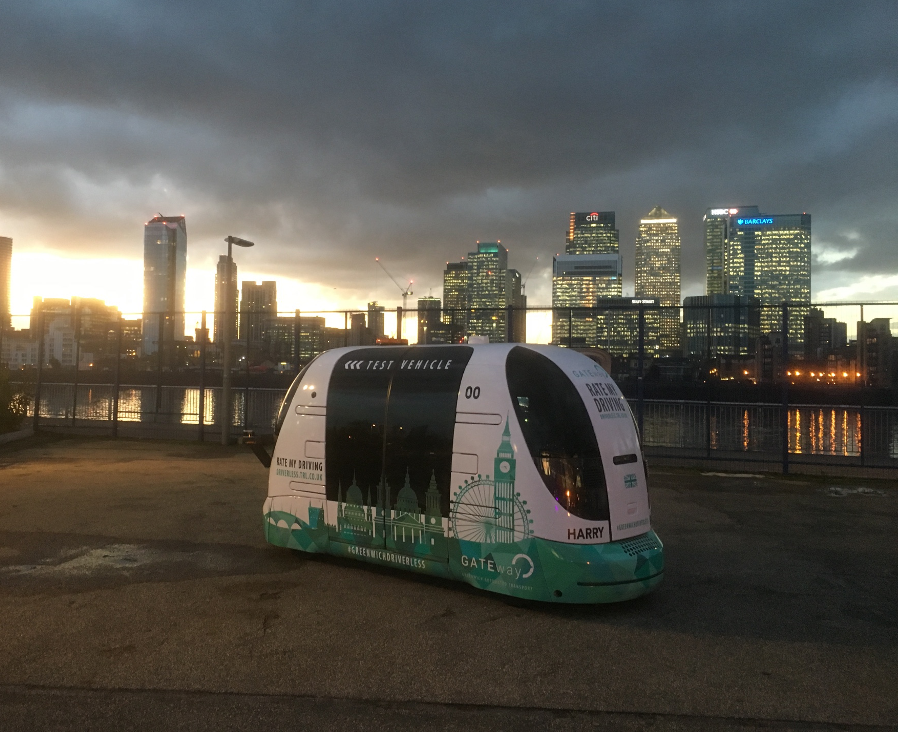By Nick Reed
In 2016, I was honoured to be invited to give a talk at TEDx Reading. The title of my presentation was ‘The promise of vehicle automation – safer, easier, journeys for all’. Four years later, how do I now reflect on my experiences that day?
Firstly, I can honestly say that it is still (by far!) the presentation for which I prepared most thoroughly. I still remember pacing my kitchen and going through the exact phrases and key points for each slide over and over again. Thankfully, my proper preparation prevented poor performance but has the content stood the test of time?
I started (as many such talks do) by discussing the potential safety and efficiency benefits of automated vehicles (AVs). Whilst there have undoubtedly been some exciting developments and I still believe that AVs will help address these issues, we are not at the stage where we can point to widespread deployments that prove these benefits exist.
I talked about the GATEway project and its ambition to trial AVs with members of the public in London. I think its fair to say that this ambition was realised – public trials were successfully completed with automated shuttles, an automated delivery vehicle and a teleoperated vehicle.

Stormy skies beyond the GATEway automated shuttle in 2017
Furthermore, I mentioned the concept of using the Royal Borough of Greenwich as the Smart Mobility Living Lab – an idea that was subsequently funded to the tune of £13.4m and has become a core component of Testbed UK, the initiative to develop UK facilities for AV testing and development.
I also talked about the MOVE UK project and its objective to develop tools for the validation of automated vehicles by monitoring how automated vehicle systems operate in the background whilst a vehicle is human driven in an urban environment. Led by Bosch with support from TRL, Direct Line Insurance, The Floow, Jaguar Land Rover and The Royal Borough of Greenwich, this project has indeed enabled the development of protocols that are accelerating the validation of AV technologies and generated insights into the collection of vehicle data associated with risk.
Next I discussed the issue of ethics and automated vehicles and why I considered the Trolley Problem to be less of an issue that some were making it out to be. Since that time, I think it is fair to say that the AV sector has indeed recognised that discussions of Trolley Problems offer more heat than light. However, I was recruited by the European Commission to participate as one of an expert group on the ethics of automated driving. This group was chaired by Jean-Francois Bonnefon, an author of ‘The Moral Machine experiment’; a study published in Nature that explored human preferences in a range of situations similar to the Trolley Problem and based on the premise of automated vehicles. The expert group quickly established that ethical issues for automated driving went far beyond those immediately related to Trolley Problems. However, the recommendations from the group do shed further light on how automated vehicles can effectively manage risk in such critical situations – but you will have to wait until the recommendations are published later this year to find out more…!
My next topic was how examples of poor implementation of automation in aircraft could be instructive in the introduction of automated systems in cars. Although many organisations are working on this topic, it is still my sense that the discipline of human factors in underappreciated in the development of AVs. Of course, making vehicles drive for themselves is a massive challenge but if we don’t understand how humans may use and misuse automation systems tragedies may follow. Sadly, we can already point to several such examples with the tragic deaths of Tesla drivers, Joshua Brown, Walter Huang and Jeremy Banner and pedestrian, Elaine Herzberg, who was killed by an Uber automated vehicle that was under test. In each case, it can be argued that the automated capabilities of the vehicles were drastically misjudged by the humans at the controls. In an uncompromising review of the Huang crash, the National Transportation Safety Board (NTSB) in the U.S. listed the following significant failures:
- Huang’s employer did not have a policy preventing mobile phone use while driving;
- Tesla’s Autopilot systems do not include sufficient monitoring of driver engagement;
- It should not be possible to use Tesla’s Autopilot systems outside of a specific operational design domain;
- Tesla’s collision avoidance systems failed to detect or respond to critical hazards;
- Insufficient federal oversight of partial driving automation systems;
- Lack of standardisation of and access to safety relevant data from the vehicle for the purposes of crash analysis and risk assessment;
- Issues in the timely repair of highway infrastructure.
The behaviour of Tesla’s Autopilot system, driver distraction and ineffective driver monitoring were specifically cited as the ‘Probable Cause’ of the crash. As my 2016 talk highlighted, we have been aware of these human factors risks for many years – we need to apply effective human factors thinking to the development of AVs from the outset. Some of the work Reed Mobility is doing for BSI on their programme of standards for the development and deployment of AVs is helping to address this.
Finally, I talked about my scepticism over some of the huge claims that were being made about the potential productivity gains that could be made if people were freed from the driving task. Again, we still have no data with which to validate such claims but my concerns over passengers feeling sufficiently comfortable in an automated vehicle to engage in everyday work tasks remain. In the meantime, we have had a fantastic paper from 2018 by Erica Groshen and co-authors on how the workforce can adapt to the anticipated introduction of AVs over the next thirty years, showing that the anticipated financial benefit of AVs can be used for policy interventions that can help smooth the transition.
In closing, perhaps the most provocative statement of the talk was to ask “when might it be considered unethical not to introduce automated vehicles?”. We are certainly not there yet. What we need to do is to understand how they can improve on the current transport situation today – and I mean this in the context of the following urgent needs:
- to decarbonise transportation;
- to improve equitable access to transportation;
- to integrate transportation more effectively into new developments;
- to recognise how AVs fit into a hierarchy of transport modes, with walking and cycling at the top followed by shared public transport.
And of course, we need to understand what contribution AVs can make to safety – yet there are no universally accepted metrics for how we can demonstrate this robustly, even before we start considering what level of safety improvement would be deemed publicly acceptable. This evidence is likely to require a mix of virtual, test track and real-world data but the exact shape of that mix is definitely a work in progress.
One topic that was not covered in my talk is the issue that has dominated 2020: COVID19. Of course, not many were predicting it (although Bill Gates was urging preparedness for such a pandemic in 2015) but with public transport services dramatically affected, many more people relying on home deliveries and an urgent requirement for the safe transportation of key workers, medical supplies and testing kits, the scene could have been set for automated vehicles to step into the breach. Aside from a few examples (e.g. Cruise, Pony.ai, Nuro), that this did not happen reflects the true state of readiness of automated vehicles – and the fact that they still tend to depend heavily on humans for their operation. However, it can be hoped that the attention such services garnered during the pandemic will ensure greater readiness when the next pandemic strikes.
In conclusion, the content of my talk four years ago still holds up. However, in some ways this is disappointing. In this retrospective piece, I would have preferred to talk about evidence showing how AVs had since started tackling those collisions caused by human error or to describe studies that showed how we had solved some of the human factors issues with AVs – but that is not the case. In 2020, the promise of vehicle automation remains – but for now, it remains unfulfilled. The ITEN team has a unique combination of skills and experience to explore how AVs can deliver improved mobility today and to determine what regulatory, societal, technological and infrastructure developments are necessary for us to move beyond AVs holding promise and that sees tangible benefits for all with AVs as part of an integrated, sustainable and equitable transport system.


Recent Comments